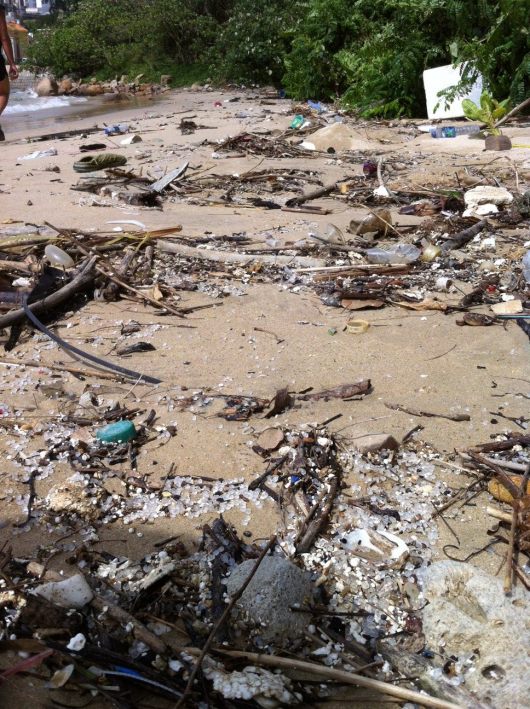Where we go one, we go all
Bogenoemde is die leuse van een die uitdagendste avonture waaraan `n Suid-Afrikaanse hoërskoolseun hom kan blootstel. Sewe dae van honger en uitputting... Oorgelewer aan die natuurelemente... Karakteropvoeding deur avontuur!Die Grosvenor Oorlewingstap is `n kursus wat lewens verander. `n Kursus wat jou wegvat uit jou comfort zone, jou grense verskuif en jou leer om te oorleef in die natuur. `n Kursus wat van seuns jong manne maak.
Met net die nodige klere aan hulle lywe en geen tente, kussings of slaapsakke nie, word daar van die jong manne verwag om binne 7 dae die 83km vanaf Wildernis tot by Hartenbos, te voet te voltooi.
Op die oog af lyk dit nie te erg nie... Maar probeer dit sonder kos in jou maag...
Want dit is die ding wat die Grosvenor so tough maak. Elke kursusganger moet hoofsaaklik hul kos en water uit die natuur kry. As `n man honger is, lyk selfs `n brandsiek hond uit `n lokasie na `n heerlike maaltyd. Al gou leer hulle dat honger die beste kok is en word naarstiglik na enigiets te ete gesoek: paddas, mossels, riete en selfs skerpioene.
Dit was juis Jacobus wat in 2013 op sy eerste Grosvenor vir die manne geleer skerpioen eet het. Daardie jaar was `n besonderse moeilike jaar aangesien die weer ook nog teen hulle was en dit vir drie dae lank aaneen gereën het en bitter koud was. Natuurkos was skaars en Jacobus het 11kg verloor binne `n week. Dit was egter ook die week waarin hy nog die meeste Bybel gelees het...
Tydens hierdie kursus word jou uithouvermoë en karakter tot die uiterste getoets. Manne wat swaarkry word deur spanmaats gehelp. Soms moet jy ekstra gewig dra om jou maatjie te help. Ander kere moet jy motiveer of selfs van jou kos deel as ander nie meer het nie...
Where we go one, we go all. Turning back is no option.
Almal is trots en dankbaar as die eindpunt in Hartenbos bereik word en hulle gulsig kan weglê aan die kos wat voorgesit word. Mammas (en pappas) staan met trane in hul oë.
Oom Ewald Crause, of “Seevader” soos hy aan die Suid-Kaap bekend staan, het 41 jaar gelede hiermee begin. `n Kursus waarin seuns deur swaarkry hulself leer ken, hul karakter bou en deursettingsvermoë leer. Deur die jare is oom Ewald bygestaan deur `n handjievol instrukteurs – manne met hare op hul tande wat jaar na jaar terugkom vir nog...
Vir die afgelope drie jaar was Jacobus so bevoorreg om deel te wees van hierdie groep en het hy `n hegte vriendskapsband gesmee met manne soos Kosie Gericke, Johan Potgieter, Josef Krone, Alain Krog en Anro Taljaart. Manne vir wie hy `n geweldige respek het.
In die afgelope jaar het die Here een van hierdie besonderse mense, Alain Krog, tot Hom geneem. Hy was iemand wat altyd `n groot inspirasie was vir Jacobus en baie ander Grosvenor-manne.
Jacobus het skuldig gevoel omdat hy hierdie jaar sy eie ding doen en die ander instrukteurs vir 2017 se Grosvenor drop. Veral omdat hulle nou sonder hom en Alain moet regkom. Hy weet dat hulle nou al begin gereed maak vir die uitdaging oor drie weke...
Daarom wil hy met hierdie post sy Grosvenor-makkers die Here se seën toewens. Mag Hy julle beskerm en alles gee wat julle nodig het. Mag Hy julle gebruik om vanjaar net so `n groot rol in die lewe van die jong manne te speel, soos wat julle in sy lewe gespeel het.
Dit is te danke aan die drie Grosvenors waaraan hy deelgeneem het, dat Jacobus hierdie groot projek “Footsteps to Good Hope” aanpak. Hy hoop om oom Ewald en van sy Grosvenor-maats by Kaappunt te sien as hy DV die 13e Januarie 2018 by Kaappunt klaarmaak.
Where we go one, we go all...













